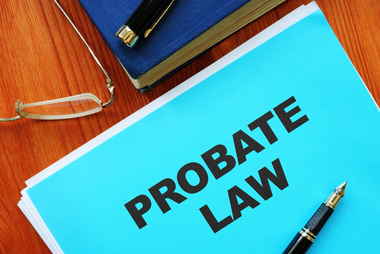Probate refers to the general administering of a deceased person’s will or the estate of a deceased person without a will. The general rule of thumb in Minnesota is that your estate goes through probate if (1) you die with more than $75,000.00 in your name alone; or (2) you die owning any real estate in your name alone.
Probate Process
To start the probate process, the person requesting appointment as personal representative files a petition with the court. The personal representative must then send notice of the probate administration to interested persons and creditors. Once appointed, the personal representative collects the assets of a deceased person and determines any debts or liabilities of the estate. 
After the personal representative has inventoried the deceased person’s assets and determined their value, as well as paid off any debts, he may seek authorization from the court to distribute whatever is left to the beneficiaries. If the person died “testate” (meaning she had a will), those beneficiaries are listed in the will. If the person died “intestate” (meaning there is no will), the court looks to the Minnesota “laws of intestacy” to determine who will inherit.
The probate process typically takes six months to one year. This allows time for an heir to challenge a current will, for the probate court to confirm there are no errors in the documentation, and for creditors to make claims against the estate.
Alternatives to Probate
Probate is not necessarily a bad thing. The court is making sure the personal representative follows the deceased person’s wishes and that creditors are paid! For those that wish to avoid probate, however, there are a few options. Keep in mind that the use of joint ownership and pay on death designations is only advisable in limited circumstances and with small estates.
Remember that the general rule of thumb in Minnesota is that your estate goes through probate if (1) you die with more than $75,000.00 in your name alone; or (2) you die owning any real estate in your name alone.
Create a revocable living trust. A revocable living trust is a legal entity that holds title to all of your assets. You then draft instructions for how you want those assets managed and distributed if you become incapacitated or after you die. Because your trust owns your assets, and not you as an individual, you will not die with anything “in your name alone” and thus avoid probate.
Add a joint owner. You can add a joint owner to bank or investment accounts or to real estate. Many married couples own these assets as joint tenants with rights of survivorship. After the first owner dies, the property passes to the surviving owner. There is no need for probate because the first owner did not own the asset “in her name alone.” WARNING: adding joint owners on accounts can have unintended tax, liability, and control consequences! ALWAYS speak with legal and financial advisors before adding a joint owner to any account.
Add a beneficiary designation. “Payable on death” or POD designations can be added to life insurance, bank or investment accounts, and retirement accounts. Minnesota also allows for Transfer on Death Deeds, which will pass real estate to named beneficiaries after your death. Again, there is no need for probate because the owner did not own the asset “in her name alone,” there was a beneficiary designation.
Conclusion
What works for you will depend on your what you own, your family dynamics, and your financial situation. The attorneys at Rochford Langins Jarstad work with our clients to create a plan that brings peace of mind, whether it be through a will, trust, or otherwise. Call us today at 507-534-3119.

